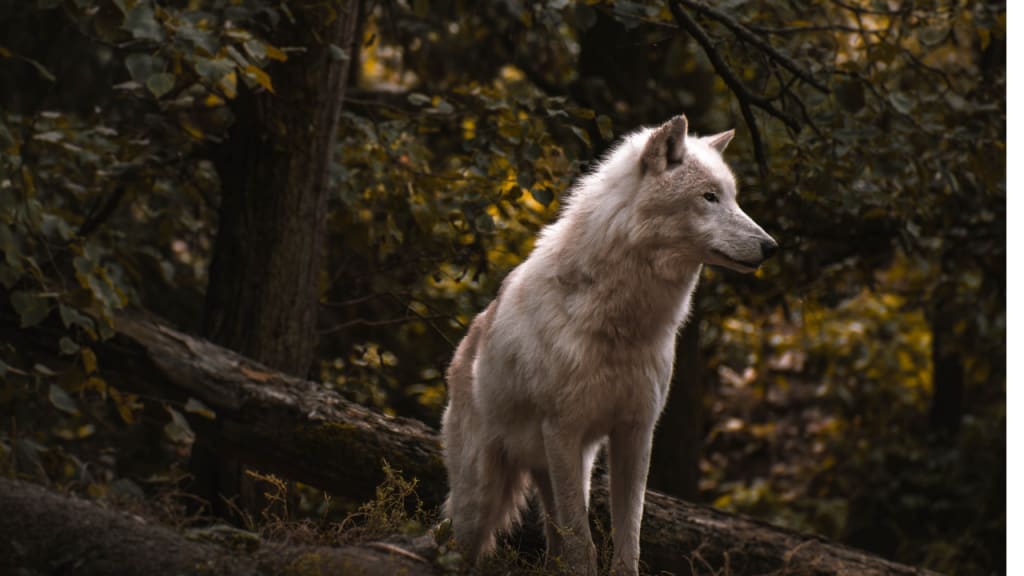The Wolf
The Mystery of the Wolf: An Exploration of Nature's Fiercest Predator

The wolf is a stunningly beautiful animal that has long been a source of fascination for humans. Not only is the wolf one of the most iconic animals in the world, but it also has an impressive history and some unique characteristics that make it one of the most interesting creatures to study. This article will explore the wolf in depth, including its physical characteristics and behavior, its historical and cultural significance, and its current status in the wild.
First, let's take a look at the physical characteristics of the wolf. Wolves are large, muscular animals, typically weighing between 40 and 175 pounds. They have thick, shaggy fur that can range in color from grey to white to black, and they have large, pointed ears. Wolves have long legs and powerful jaws that enable them to run and hunt effectively. They also have excellent senses of smell and hearing, which help them to track prey.
The behavior of wolves is also an interesting topic. Wolves are highly social animals, living in packs of up to 12 members. The pack is led by an alpha male and female, and the other members of the pack are usually related to each other. Wolves communicate with each other through a variety of vocalizations, including howls, barks, and growls. Wolves also have a unique form of communication known as scent marking, in which they urinate and defecate in certain locations to mark their territory and to communicate with other wolves.
The historical and cultural significance of the wolf is extensive. Wolves have been featured in myths, stories, and art for centuries, and they have long been associated with strength and power. Wolves have also been regarded as both a symbol of fear and a source of admiration, often being depicted as both good and evil. In some cultures, the wolf is seen as a spiritual guide or messenger, while in others, it is seen as a symbol of loyalty and protection.
Today, wolves are currently listed as a species of Least Concern by the International Union for Conservation of Nature. Though wolf populations have been decreasing in recent years due to hunting, habitat loss, and other factors, some populations are beginning to recover due to conservation efforts. Wolves are currently found in North America, Europe, Asia, and parts of Africa.
Overall, the wolf is an amazing animal with a rich history, interesting behavior, and a promising future. Though it has been persecuted in the past, modern conservation efforts are helping to protect and conserve this iconic species. By understanding the beauty, complexity, and cultural significance of the wolf, we can better appreciate this incredible animal and the role it plays in our world.
Wolves are one of the most iconic animals in the world, with their thick fur, piercing eyes and impressive howl. They have been present throughout human history, and continue to capture the imagination of people all over the world. Wolves have been a source of both fear and admiration, with tales of their ferocity and strength as well as their intelligence and loyalty. Here we will explore the fascinating history, biology and behaviour of wolves and the many ways they have impacted the human world.
The earliest known wolves are believed to have originated in Eurasia over 300,000 years ago and migrated into the Americas later on. Wolves have since spread throughout the world, inhabiting almost every continent and a wide range of habitats. Wolves have been studied extensively and are among the best understood of all animals.
Wolves are members of the Canidae family, which includes coyotes, jackals and foxes. They are large animals, with males ranging from 84 to 88 cm in shoulder height and females from 77 to 81 cm. Wolves can weigh anywhere from 22 to 77 kg, with the largest individuals reaching over 80 kg. They are typically grey, black or white in colour, but some populations may have more unusual colourations such as red or brown.
Wolves live in social groups called packs, which can range in size from two to thirty individuals. Packs are led by the dominant pair, who are usually the only ones to reproduce. All members of the pack help to defend their territory and care for the pups. Wolf packs hunt together, usually in the early morning or late evening. They may chase their prey for kilometres, working together to wear them down until they can make a successful kill. Wolves are carnivorous and their diet consists mainly of large ungulates such as deer, elk, and moose.
Wolves have been revered and feared by humans throughout history, with myths and legends of their power and ferocity common in many cultures. In some cases, wolves have been seen as symbols of strength and courage, while in others, they have been feared as evil, dangerous creatures. Wolves were heavily persecuted in many parts of the world for centuries, leading to their near extinction in some places. However, protection efforts have been successful in many areas, and wolves are now recovering in some parts of their former range.
Wolves have had a large impact on the environment and other species. They are considered to be a keystone species, meaning that their presence helps to maintain the balance of the ecosystem. Wolves help to keep populations of large prey species in check, preventing overgrazing and allowing more vegetation to grow. They also help to maintain healthy populations of predators such as lynx, wolverines and bears. Wolves have also been credited with helping to reduce the spread of disease, as they help to keep populations of rodents and other disease-carrying animals in check.
Wolves also have an important cultural significance to many people. They have been an inspiration for artists, writers and musicians, and feature prominently in folklore and mythology. Wolves are also important to the spiritual beliefs of many indigenous peoples, who see them as a symbol of strength and power.
All in all, wolves are an incredibly fascinating species and have played an important role in both the natural world and human culture. Despite their fierce reputation, they are gentle and intelligent creatures, and their presence helps to keep the environment healthy and in balance. Wolves are an important part of our world and deserve our respect and protection.






Comments
There are no comments for this story
Be the first to respond and start the conversation.